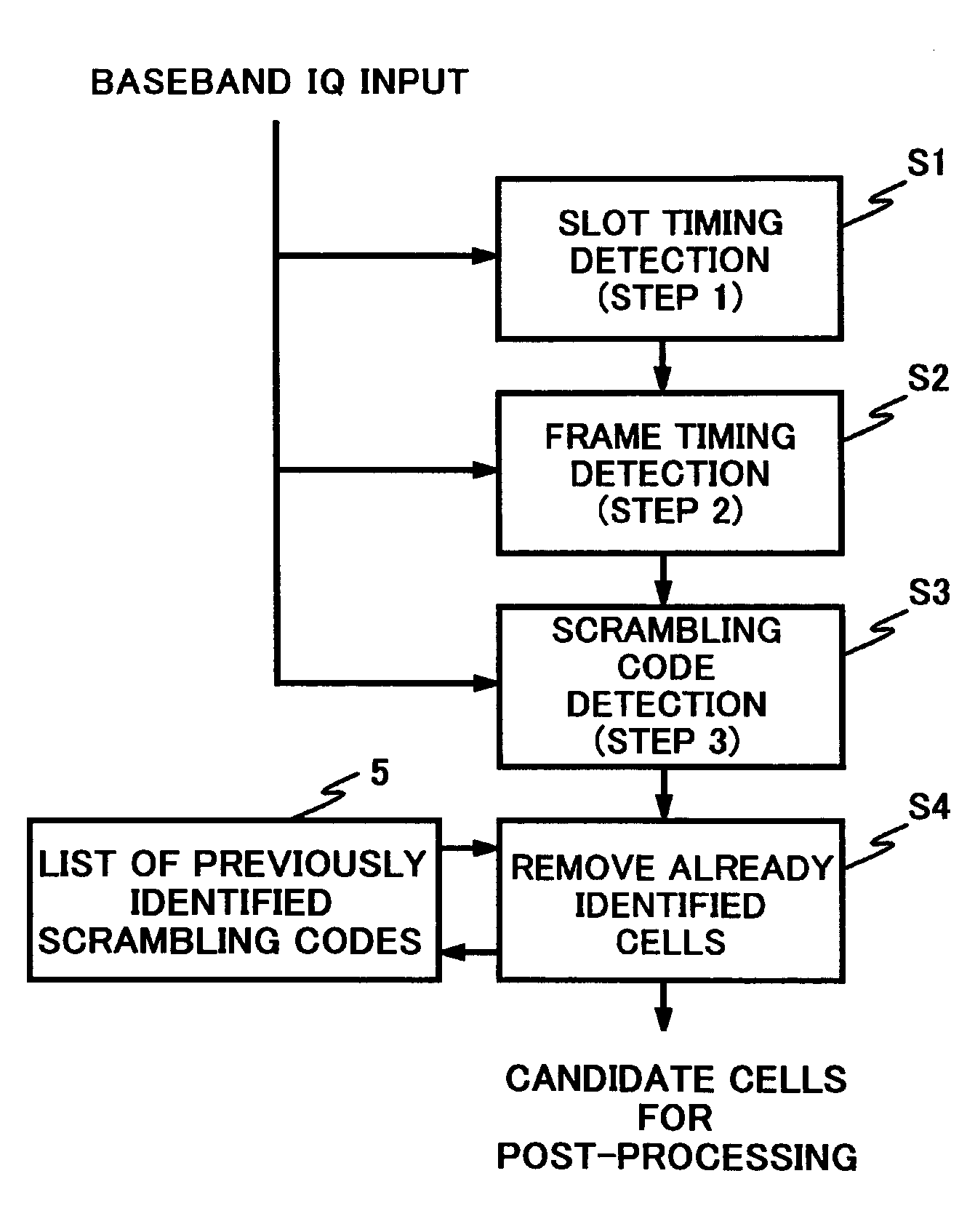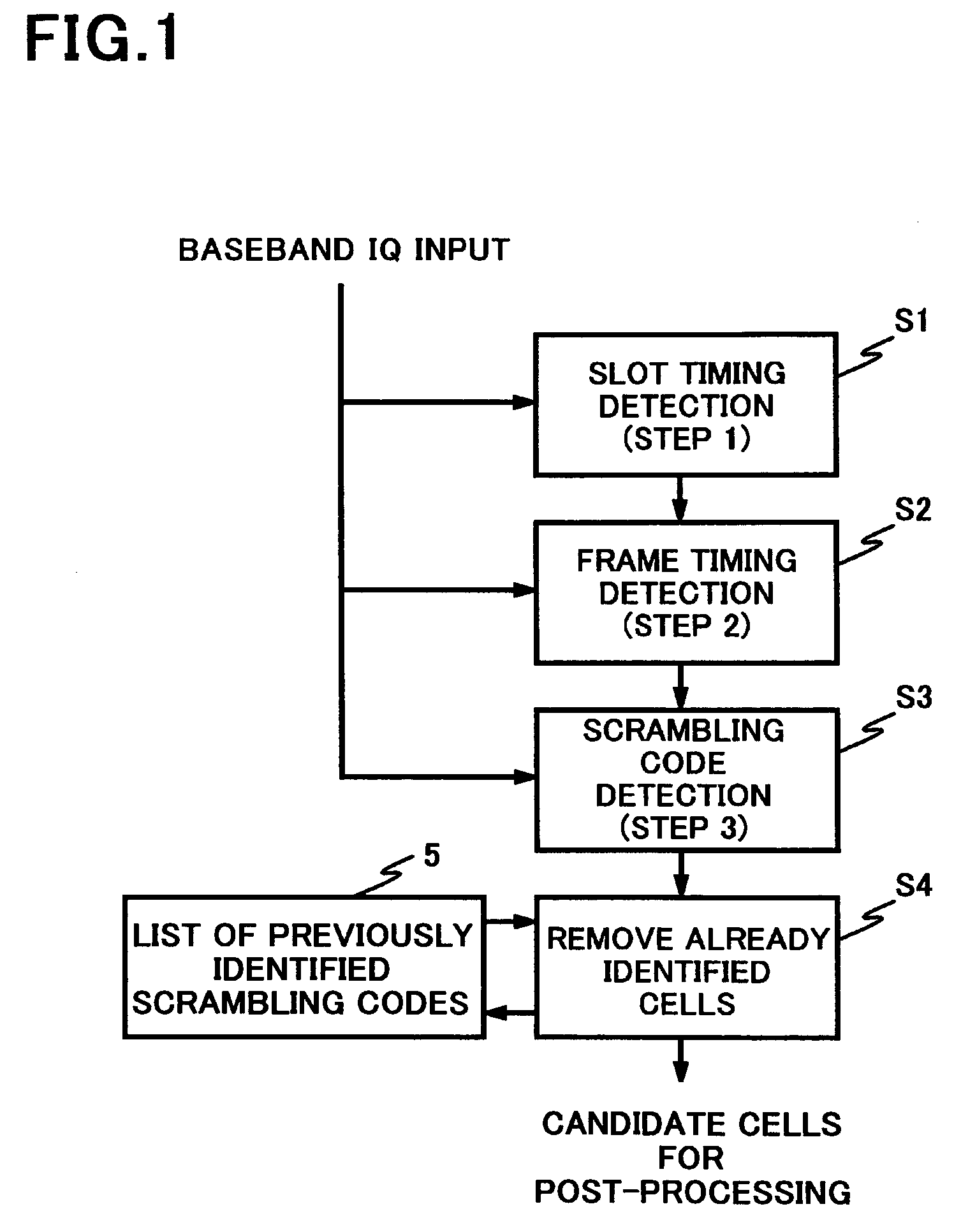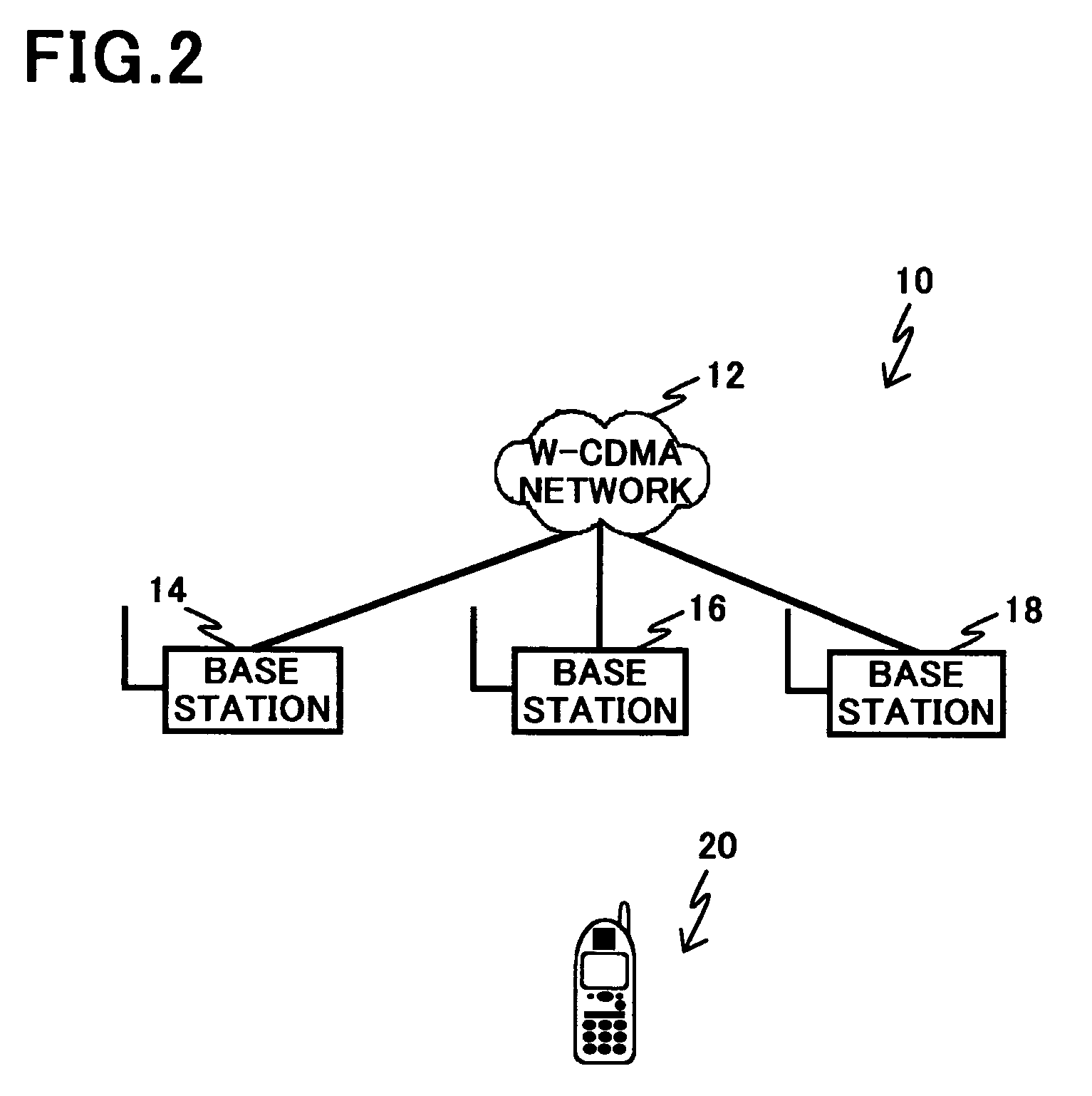Cell search process for wireless communication system
a wireless communication system and cell search technology, applied in the field of wireless communication systems, can solve the problems that the above-described standard cell search procedure does not perform well, and achieve the effects of improving the overall system performance, reducing the time taken for inter-frequency searching, and fast cell searching
- Summary
- Abstract
- Description
- Claims
- Application Information
AI Technical Summary
Benefits of technology
Problems solved by technology
Method used
Image
Examples
Embodiment Construction
[0031]Referring now to FIG. 2, there is shown generally a wireless communication system 10 including a W-CDMA network 12 and base station 14, 16 and 18. A mobile station 20 can receive a number of radio signals transmitted from cells served by the base stations 14 to 18 via multiple propagation paths. When the mobile station 20 performs a cell search, it receives a plurality of multi-path radio signals originating from the base stations 14 to 18, which are shifted in timing from each other due to signal reflection and diffraction.
[0032]FIG. 3 is a schematic diagram showing a schematic structure of the mobile station 20. This mobile station 29 includes an antenna 32, a demodulator for down converting the radio signals received by the antenna 32 to a base hand frequency, and analogue to digital converter 36 which converts received analogue signals into digital signals, a slot timing detector 38 for detecting slot timing during cell search, a frame timing and code-group detector 42 whi...
PUM
 Login to View More
Login to View More Abstract
Description
Claims
Application Information
 Login to View More
Login to View More - R&D
- Intellectual Property
- Life Sciences
- Materials
- Tech Scout
- Unparalleled Data Quality
- Higher Quality Content
- 60% Fewer Hallucinations
Browse by: Latest US Patents, China's latest patents, Technical Efficacy Thesaurus, Application Domain, Technology Topic, Popular Technical Reports.
© 2025 PatSnap. All rights reserved.Legal|Privacy policy|Modern Slavery Act Transparency Statement|Sitemap|About US| Contact US: help@patsnap.com



